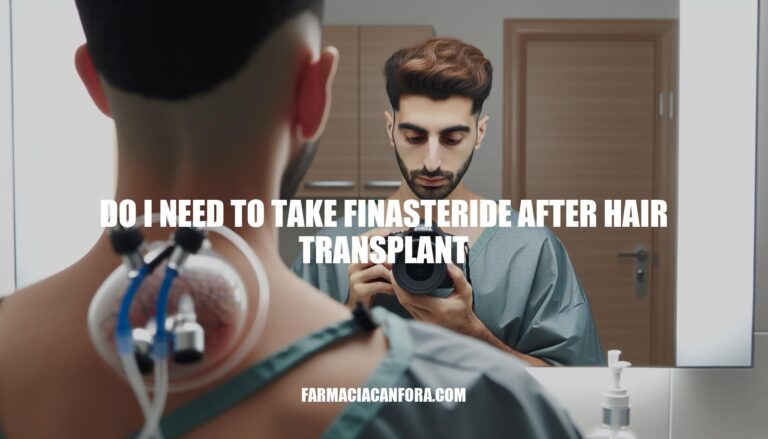


Understanding whether you need to take finasteride after a hair transplant is crucial for maintaining your new hair and preventing further hair loss. Finasteride helps inhibit the hormone responsible for male pattern baldness, ensuring the longevity and success of your transplant.
Finasteride is a medication primarily used to treat male-pattern hair loss (androgenetic alopecia) by inhibiting the enzyme 5-alpha-reductase, which converts testosterone into dihydrotestosterone (DHT). DHT is a hormone that causes hair follicles to shrink, leading to hair loss.
In the context of minoxidil“>post-hair transplant care, finasteride plays a crucial role in:
This makes finasteride a valuable component of post-transplant care to ensure long-term success and improved hair density.
Doctors often recommend taking finasteride after a hair transplant for several key reasons:
Prevents Further Hair Loss: Finasteride inhibits the production of dihydrotestosterone (DHT), a hormone responsible for shrinking hair follicles and causing male pattern baldness. By reducing DHT levels, finasteride helps prevent further hair loss in untreated areas of the scalp.
Maintains Hair Density: After a hair transplant, finasteride can help maintain the density of both transplanted and existing hair. This ensures that the overall appearance remains full and natural.
Supports New Growth: Finasteride promotes the health of transplanted follicles, aiding in their integration and growth. This can enhance the overall success and longevity of the transplant.
Reduces the Need for Additional Transplants: By preventing further hair loss and maintaining hair density, finasteride can reduce the likelihood of needing additional hair transplant procedures in the future.
These benefits make finasteride a valuable part of post-transplant care, helping patients achieve and maintain their desired results.
Experts and studies generally agree that taking finasteride after a hair transplant is beneficial for maintaining and enhancing the results. Finasteride works by inhibiting the production of dihydrotestosterone (DHT), a hormone responsible for hair loss. This helps prevent further hair loss and promotes the growth of transplanted hair.
Without finasteride, there is a higher chance of needing additional hair transplants in the future. The medication is considered effective in increasing hair count and improving hair density, particularly in the crown and mid-scalp areas. While there are potential side effects, they are typically mild and reversible.
Here are the potential side effects of finasteride that patients should be aware of when considering its use after a hair transplant:
It’s important to discuss these potential side effects with your healthcare provider to make an informed decision.
Here are some alternative treatments to finasteride for those who may not be able to take it after a hair transplant:
Finasteride is a crucial medication for maintaining new hair and preventing further hair loss after a hair transplant. It inhibits the hormone responsible for male pattern baldness, ensuring the longevity and success of the transplant.
Finasteride plays a vital role in post-transplant care by preventing further hair loss, promoting hair regrowth, and safeguarding follicular grafts. Doctors recommend taking finasteride after a hair transplant due to its ability to prevent further hair loss, maintain hair density, support new growth, and reduce the need for additional transplants.
While there are potential side effects, they are typically mild and reversible. Alternative treatments include minoxidil, dutasteride, low-level laser therapy, platelet-rich plasma injections, and natural DHT blockers.
Ultimately, taking finasteride after a hair transplant is beneficial for maintaining and enhancing the results, making it a valuable component of post-transplant care.